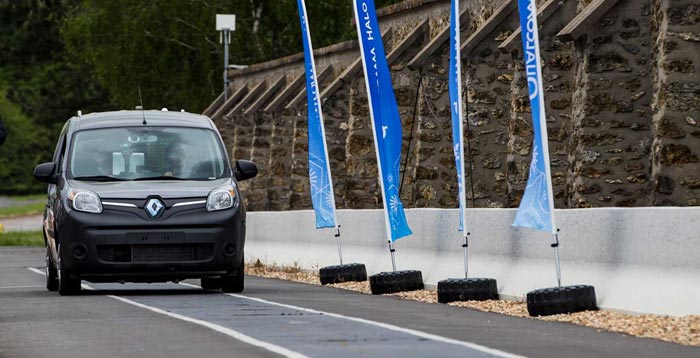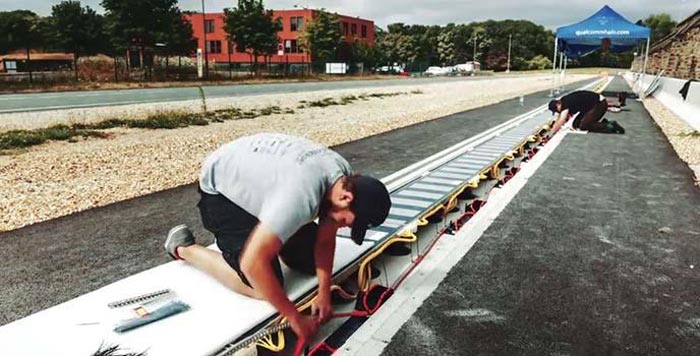Qualcomm has demonstrated its vision of "the future of wireless charging in roadways". With the Qualcomm Halo wireless electric vehicle charging (WEVC) technology built into roads it says that it's possible to charge your electric vehicle on the go. Furthermore, sufficient lengths of such track could enable to keep going for a "limitless range".
The new Halo implementation is dubbed dynamic electric vehicle charging (DEVC). Qualcomm says that a car travelling at highway speeds (100kmph+) can charge at up to 20 kilowatts. Furthermore, on the track demonstration two vehicles travelling in opposite directions simultaneously can charge using the DEVC system.

Qualcomm's demonstration took place in France, just ahead of the weekend. Built by VEDECOM at Satory Versailles, a 100m test track integrating Qualcomm Halo DEVC powered two Renault Kangoo Z.E. vehicles with charging receivers. The test was run under the auspices of FABRIC, a €9 million project, mostly funded by the European Commission, to test the technological feasibility, economic viability, and socio-environmental sustainability of wireless DEVC.

If the tech is considered as worthwhile by FABRIC it is envisioned that it will help deliver a system that facilitates the summoning of cars via smartphone, which then take you to your destination autonomously (as in the video below).
According to Qualcomm, its Halo technology in both WEVC and DEVC forms represents a "vision for future urban mobility." However, the cost of the infrastructure - miles and miles of DEVC track in our roads - looks to be a major barrier to its widespread adoption.

How Qualcomm made the DEVC track:
- The 100-meter track, is comprised of 4 x 25 meter stubs, each running from its own power supply.
- Each stub powers 14 Base Array Network (BAN) blocks coupled magnetically into the backbone cable.
- The power is transmitted across the air gap to two 10 kW vehicle pads (VPs) located under the EV. The vehicle system converts the 85-kHz AC and delivers DC power as requested to the EV’s battery management system.
- The same vehicle can charge up at a WEVC bay.













